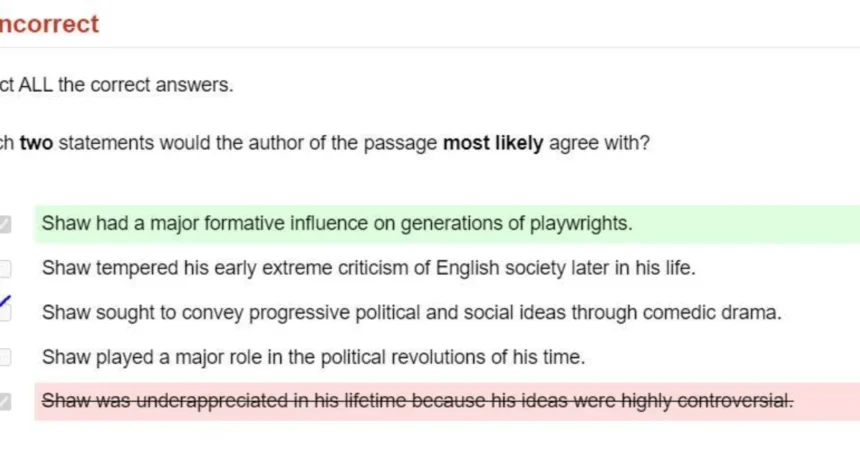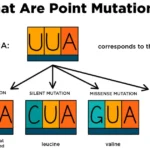When reading a passage, whether it’s for school, work, or personal interest, one question often pops up: which of the following statements most directly expresses the author’s thesis in the passage? This question can feel tricky, but it doesn’t have to be. In this article, we’ll break down what a thesis is, why it matters, and how to spot it in a passage. By the end, you’ll have a clear, step-by-step approach to answering this question confidently, no matter your age or reading level. Let’s dive in!
What Is a Thesis, and Why Does It Matter?
A thesis is the main idea or central argument that an author wants to convey in a piece of writing. Think of it as the heart of the passage—the one big point the author is trying to make. Everything else in the text, from examples to supporting details, is there to back up this main idea.
When you’re asked, “Which of the following statements most directly expresses the author’s thesis?” you’re being tasked with finding the sentence that captures this core idea in the clearest, most direct way. This is a common question in reading comprehension tests, literature classes, or even when analyzing articles for work or personal growth. Getting good at spotting the thesis helps you understand the author’s purpose and makes you a sharper reader.
Why Is Identifying the Thesis Important?
- Clarity: It helps you grasp the main point without getting lost in details.
- Critical Thinking: It trains you to analyze and evaluate what you read.
- Efficiency: It saves time by focusing on what matters most in a passage.
- Communication: Understanding the thesis helps you discuss or summarize the text effectively.
Whether you’re a student, a professional, or just someone who loves to read, mastering this skill is a game-changer. Let’s explore how to do it.
Step-by-Step Guide to Identifying the Author’s Thesis
To answer the question, “Which of the following statements most directly expresses the author’s thesis?” you need a clear strategy. Here’s a simple, human-friendly approach that anyone can follow:
Step 1: Understand the Passage’s Purpose
Before diving into the answer choices, ask yourself: What is the author trying to do? Is the passage arguing for something, explaining a concept, describing an event, or persuading you to think a certain way? The purpose often hints at the thesis.
For example:
- If the passage argues that renewable energy is essential for a sustainable future, the thesis will likely center on the importance of renewable energy.
- If it’s a descriptive passage about the life cycle of a butterfly, the thesis might focus on the stages of transformation.
Tip: Skim the introduction and conclusion. Authors often state their main point at the beginning or end of a passage.
Step 2: Look for the Main Idea
The thesis is the one idea that ties everything together. As you read, pay attention to:
- Repetition: Does the author keep coming back to a specific point?
- Emphasis: Are there bold statements or phrases that stand out?
- Transitions: Words like “therefore,” “in conclusion,” or “ultimately” often signal the thesis.
For example, in a passage about climate change, if the author repeatedly stresses that individual actions can reduce carbon footprints, that’s likely the thesis.
Pro Tip: If you’re reading a longer passage, jot down a one-sentence summary of each paragraph. The idea that appears most often is probably the thesis.
Step 3: Evaluate the Answer Choices
When faced with multiple-choice options, here’s how to pick the one that “most directly expresses” the thesis:
- Look for Clarity: The correct answer should be concise and focused on the main idea. Avoid options that are too vague or overly specific.
- Check for Scope: The thesis should cover the entire passage, not just one part. If an option only reflects a supporting detail, it’s not the thesis.
- Avoid Distractions: Some options might be true but not central to the author’s point. For example, a passage about the benefits of exercise might mention improved mood, but if the main focus is physical health, the thesis won’t be about mood.
Example: Passage: “Exercise improves heart health, strengthens muscles, and boosts energy levels. While it also enhances mood, the primary benefit is its impact on overall physical well-being.”
- Option A: Exercise improves mood.
- Option B: Exercise is essential for physical health.
- Option C: Exercise boosts energy levels.
The correct answer is Option B because it captures the main focus of the passage—physical health—while the other options focus on secondary benefits.
Step 4: Watch for Common Traps
Test writers love to throw in tricky answer choices. Here are some pitfalls to avoid:
- Too Broad: An option that’s so general it could apply to any passage (e.g., “Change is important”).
- Too Narrow: An option that only covers a small part of the passage (e.g., a single example instead of the main idea).
- Opposite of the Thesis: An option that contradicts the author’s point.
- Partially True: An option that’s true but not the main focus.
Quick Tip: If you’re stuck, eliminate the options that are clearly wrong. This narrows your choices and boosts your odds of picking the right one.
Step 5: Double-Check with Evidence
Once you’ve chosen an answer, go back to the passage. Can you find evidence (examples, facts, or arguments) that supports your choice? The thesis should be backed up by the content of the passage. If your chosen statement doesn’t align with the evidence, reconsider your pick.
Examples to Make It Crystal Clear
Let’s walk through a couple of examples to show how this works in practice.
Example 1: A Passage About Technology
Passage Summary: The author discusses how smartphones have revolutionized communication by making it faster and more accessible. They provide examples like instant messaging and video calls but also mention drawbacks like reduced face-to-face interaction. The conclusion emphasizes that smartphones have transformed how we connect.
Question: Which of the following statements most directly expresses the author’s thesis?
- A) Smartphones have some negative effects on social interactions.
- B) Smartphones have made communication faster and more accessible.
- C) Video calls are a popular feature of smartphones.
- D) Technology is constantly evolving.
Answer: Option B. Why? It captures the main idea of the passage—smartphones transforming communication—while the other options are either too narrow (C), partially true (A), or too broad (D).
Example 2: A Passage About Healthy Eating
Passage Summary: The author argues that a plant-based diet reduces the risk of chronic diseases like diabetes and heart disease. They cite studies showing lower cholesterol levels in vegetarians and discuss how plant-based foods are rich in nutrients. The passage acknowledges that meat-based diets can be healthy but stresses that plant-based diets are more sustainable.
Question: Which of the following statements most directly expresses the author’s thesis?
- A) Meat-based diets can be healthy.
- B) Plant-based diets reduce the risk of chronic diseases.
- C) Vegetarians have lower cholesterol levels.
- D) Plant-based foods are nutrient-rich.
Answer: Option B. Why? It directly states the main argument of the passage. Option A contradicts the focus, while C and D are supporting details, not the thesis.
How to Practice Identifying the Thesis
Want to get better at this? Here are some easy ways to practice:
- Read Actively: When reading articles, books, or essays, pause after a few paragraphs and ask, “What’s the main point so far?”
- Summarize in Your Own Words: After finishing a passage, write a one-sentence summary. This helps you zero in on the thesis.
- Use Practice Questions: Websites like Khan Academy, SAT prep sites, or reading comprehension workbooks often have sample passages with thesis questions.
- Discuss with Others: Talk about what you read with friends or family. Explaining the main idea out loud sharpens your skills.
Why This Skill Matters Beyond Tests
Identifying the thesis isn’t just for acing exams. It’s a life skill that helps you:
- Understand News and Media: Spot the main point in articles or opinion pieces to avoid misinformation.
- Make Informed Decisions: Quickly grasp the core of reports or proposals at work.
- Engage in Conversations: Summarize ideas clearly when discussing books, movies, or current events.
For example, when reading a news article about climate change, identifying the thesis (e.g., “Urgent action is needed to combat global warming”) helps you focus on the key message and avoid getting sidetracked by statistics or anecdotes.
Common Challenges and How to Overcome Them
Even with a solid strategy, you might face some hurdles. Here’s how to tackle them:
- Challenge: The passage is long and complex.
- Solution: Focus on the introduction, conclusion, and topic sentences. These often contain the thesis.
- Challenge: The answer choices are confusingly similar.
- Solution: Compare each option to the passage’s main focus. Eliminate any that don’t cover the whole text.
- Challenge: You’re short on time.
- Solution: Skim for key words or phrases that signal the main idea, like “I believe,” “the evidence shows,” or “in summary.”
Final Thoughts: You’ve Got This!
Answering the question, “which of the following statements most directly expresses the author’s thesis in the passage?” is all about focusing on the big picture. By understanding the passage’s purpose, spotting the main idea, and carefully evaluating answer choices, you can tackle this question with confidence. Whether you’re a student, a professional, or just a curious reader, this skill will make you a better thinker and communicator.







